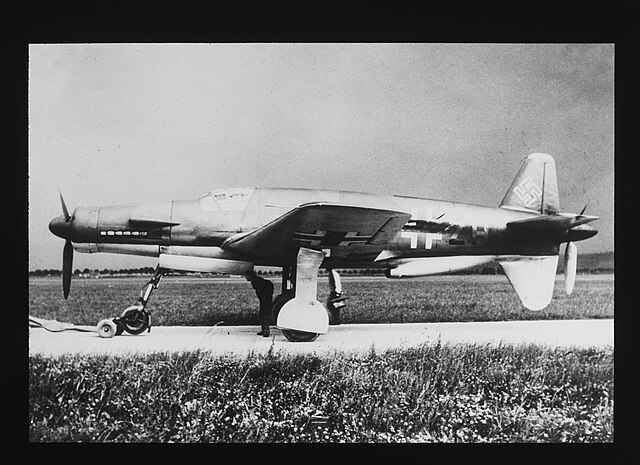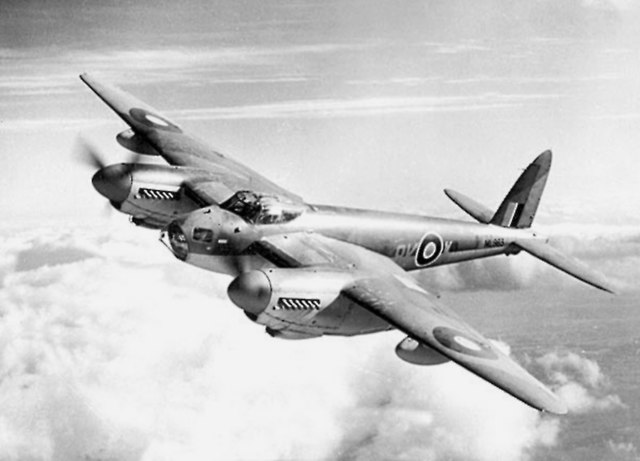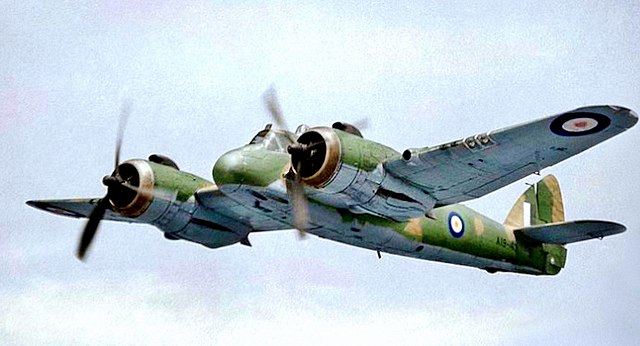The Dornier Do 335 Pfeil (Arrow) is a heavy fighter built by Dornier for Germany during World War II. The Pfeil's performance was predicted to be better than other twin-engine designs due to its unique push-pull configuration and the lower aerodynamic drag of the in-line alignment of the two engines. It was Nazi Germany's fastest piston-engined aircraft of World War II. The Luftwaffe was desperate to get the design into operational use, but delays in engine deliveries meant that only a handful were delivered before the war ended.
Dornier Do 335
A Do 335 prototype in flight
Do-335s on the apron at Oberpfaffenhofen at the war's end, including unfinished two-seat versions
One of the prototypes under tow, date unknown
A heavy fighter is a historic category of fighter aircraft produced in the 1930s and 1940s, designed to carry heavier weapons or operate at longer ranges than light fighter aircraft. To achieve performance, most heavy fighters were twin-engine, and many had multi-place crews; this was in contrast to light fighters, which were typically single-engine and single-crew aircraft. In Germany, these larger fighters were known as Zerstörer ("destroyer").
A de Havilland Mosquito FB.VI fighter-bomber used for testing rocket armament
The Potez 633, a light-bomber variant of the 63 series
A Messerschmitt Bf 110 in flight
Bristol Beaufighter








